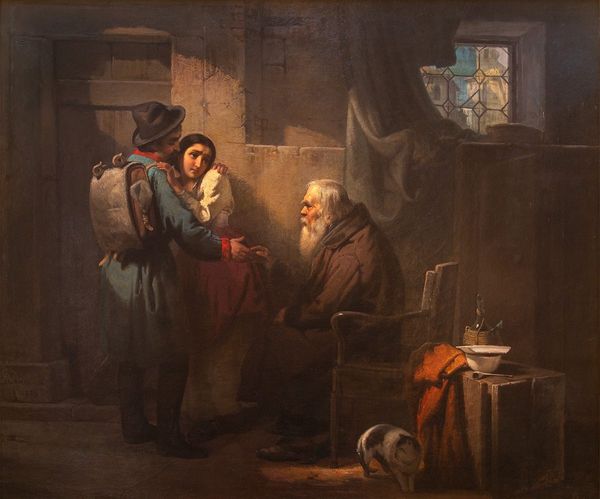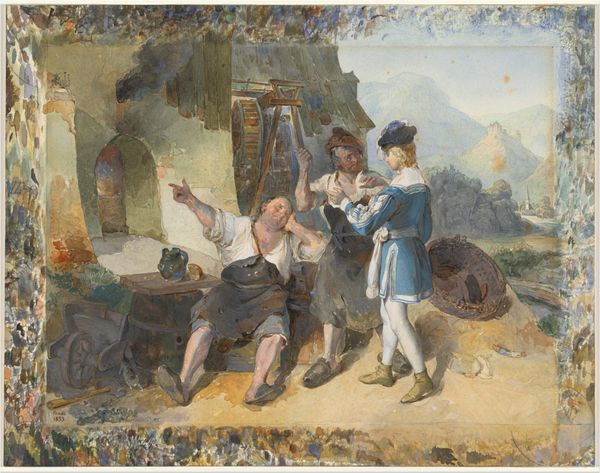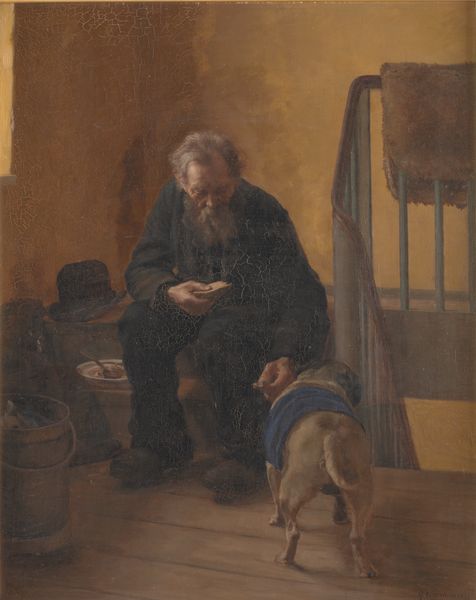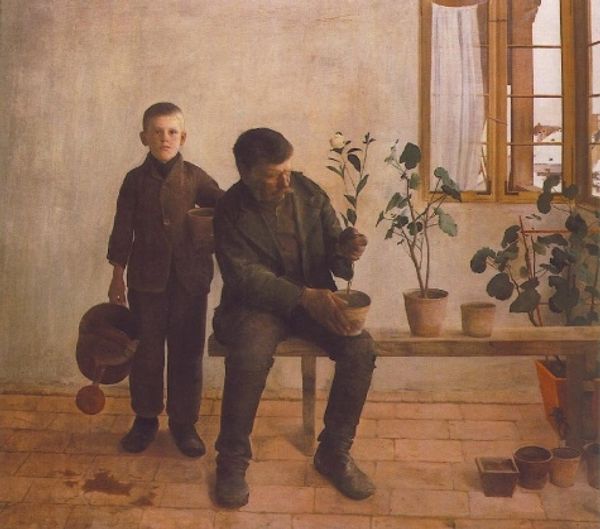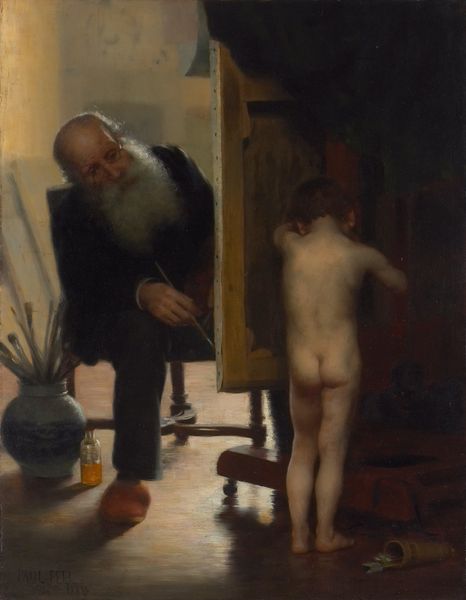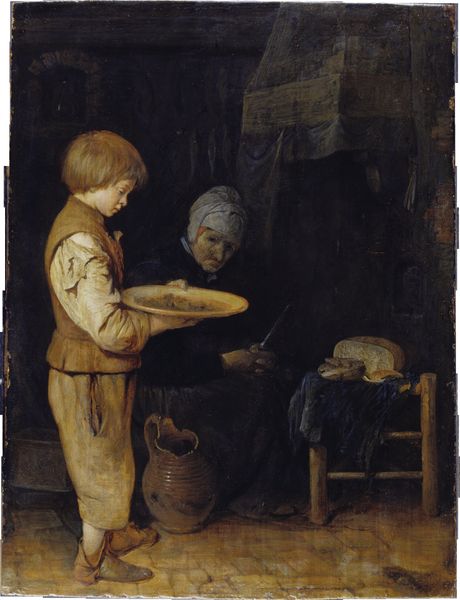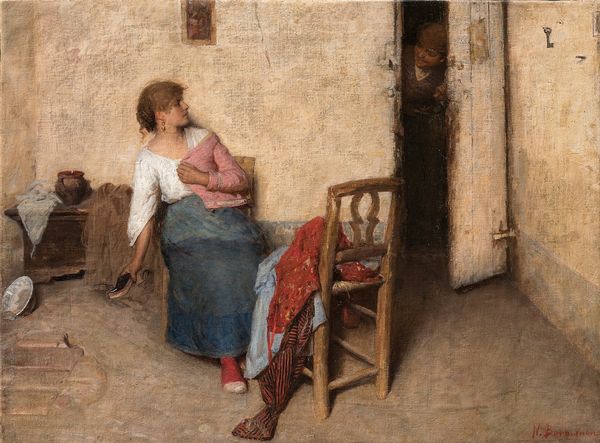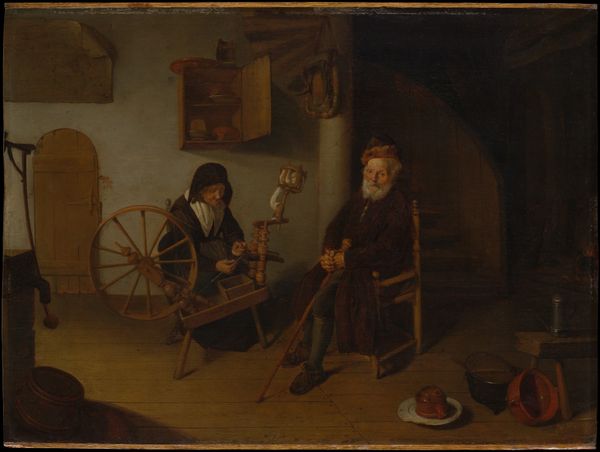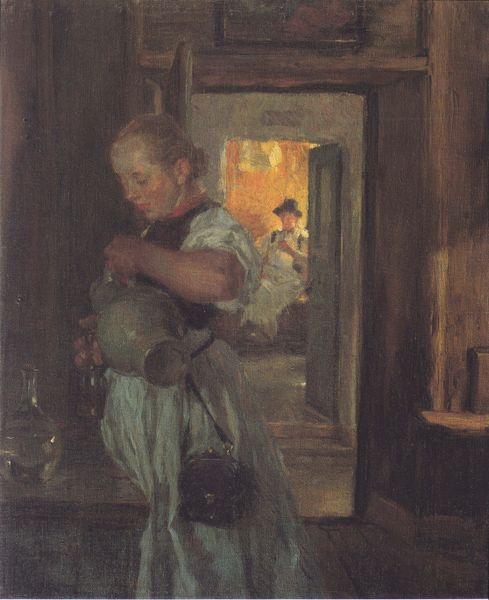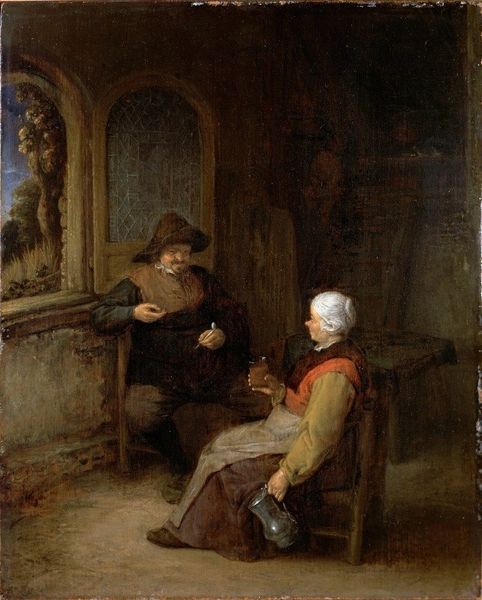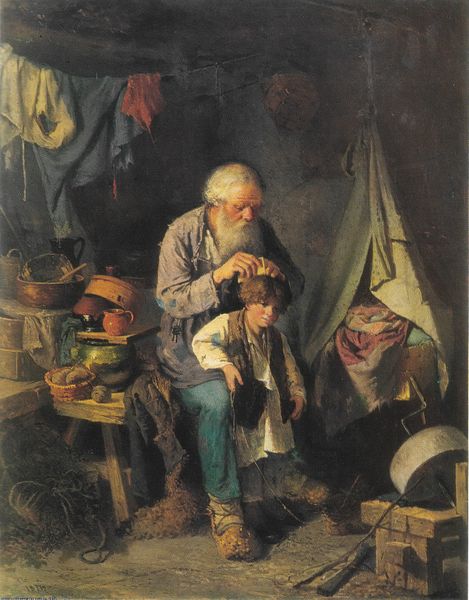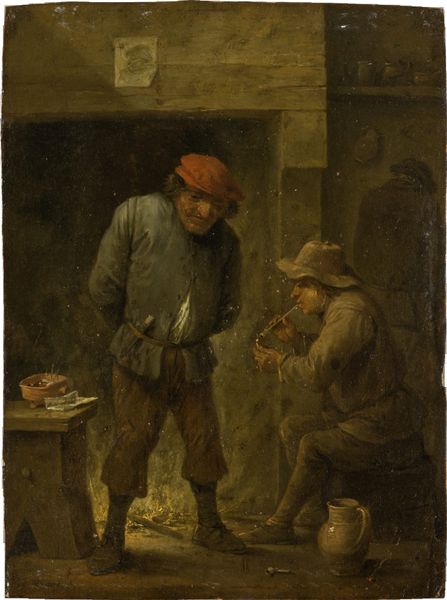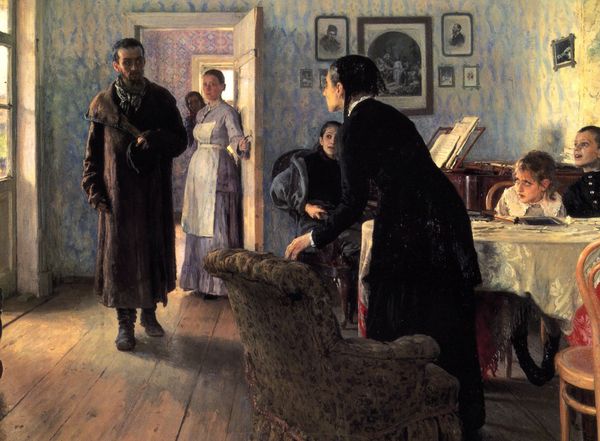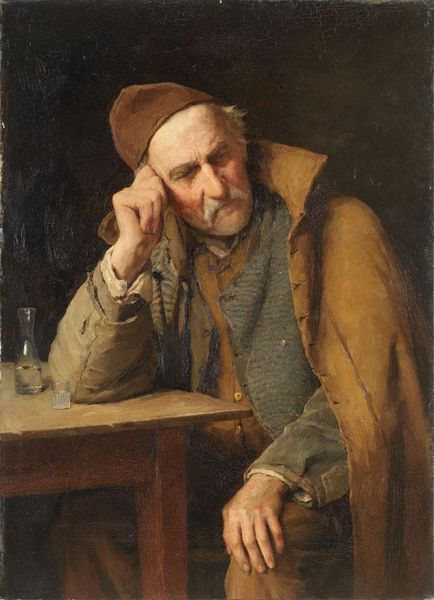
#
gouache
#
water colours
#
possibly oil pastel
#
underpainting
#
painting painterly
#
watercolour bleed
#
watercolour illustration
#
surrealist
#
mixed media
#
watercolor
Copyright: Public domain
Curator: This is Jules Bastien-Lepage’s "The Beggar," painted in 1880, a piece that evokes a very specific socio-economic reality of 19th-century France. Editor: Immediately, I'm struck by the earthy palette – muted browns and grays dominate. There is an overwhelming sense of subdued humility. Curator: Lepage was known for his focus on rural life, particularly the struggles of the working class. The beggar embodies this. Consider how the positioning and even casting of a marginalized figure relates to visual power structures. How is this person depicted? Does the painting re-inscribe systems of social hierarchy, or attempt to subvert them? Editor: Indeed. I'm drawn to the contrast between the figure of the beggar and the presence of the young girl behind him. The sharp, painterly execution of his clothes against the relative haziness of the background elements. There’s also a marked distinction between the textures – coarse fabric against soft skin. It's interesting what these visual relationships do. Curator: Absolutely. The child’s presence casts light on the intergenerational nature of poverty; her expression speaks volumes about her lack of options, the social restrictions faced by both of them. Also, how does the light in the piece tell the viewer who has social power and who is pushed back, both in that time period, and how the painting lives on. Editor: Looking closely, you can see Lepage masterfully handles light to create depth. It brings my eye from the darker doorway out toward that beautiful spill of illumination onto the geranium, drawing a line through the scene. Curator: In Lepage’s work, there’s always an intentional blurring of lines – between observation and critique. His paintings serve as sites where art history and contemporary social thought meet. We have to consider intersectional elements, and that in and of itself provides an opening for further dialogue and more possibilities for change. Editor: Precisely! It’s rewarding to visually dissect how these formal decisions, as minute as they are monumental, produce and deliver particular feelings for particular topics. Curator: "The Beggar" compels us to question not only the social context in which it was created but also how we, as viewers, engage with it today, in a world that is sadly still rife with inequalities. Editor: Well said. It serves as a beautiful example of art’s power, not just to depict but to spark enduring introspection.
Comments
No comments
Be the first to comment and join the conversation on the ultimate creative platform.
